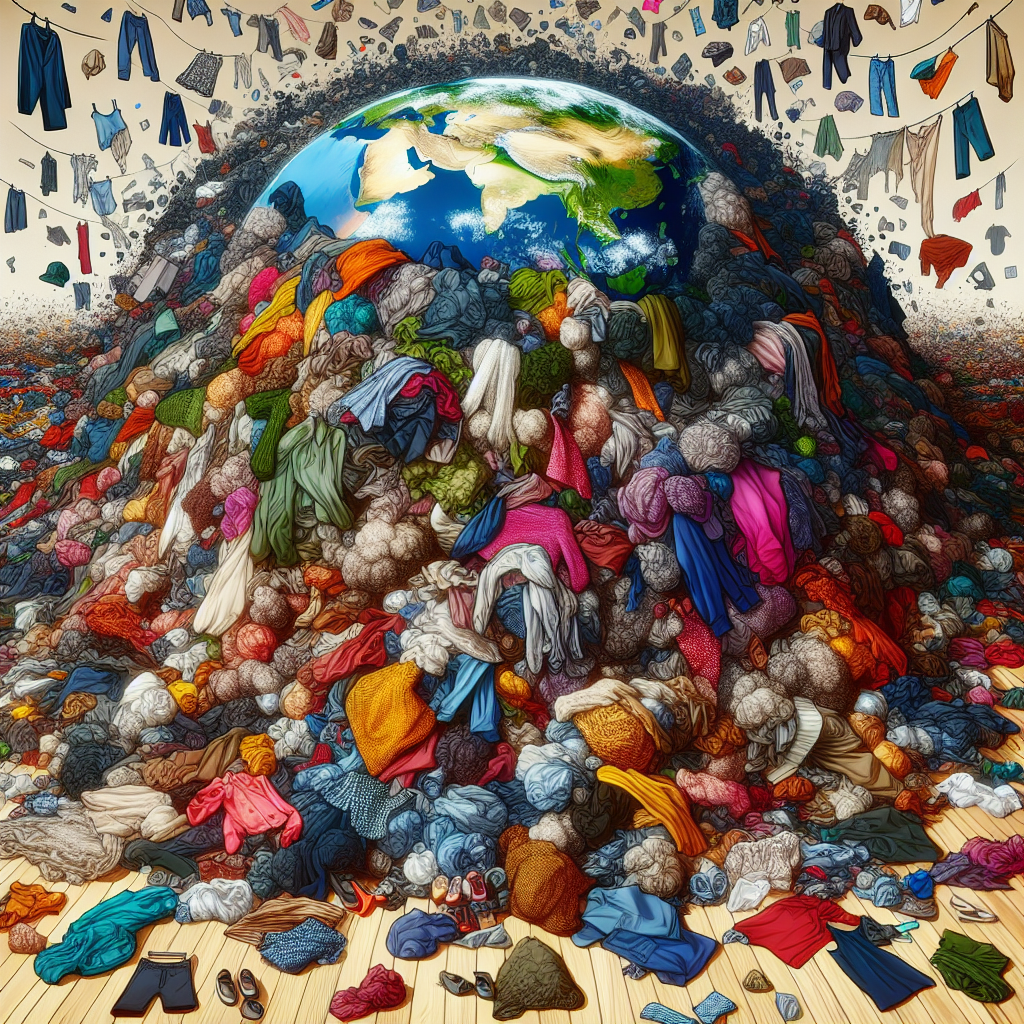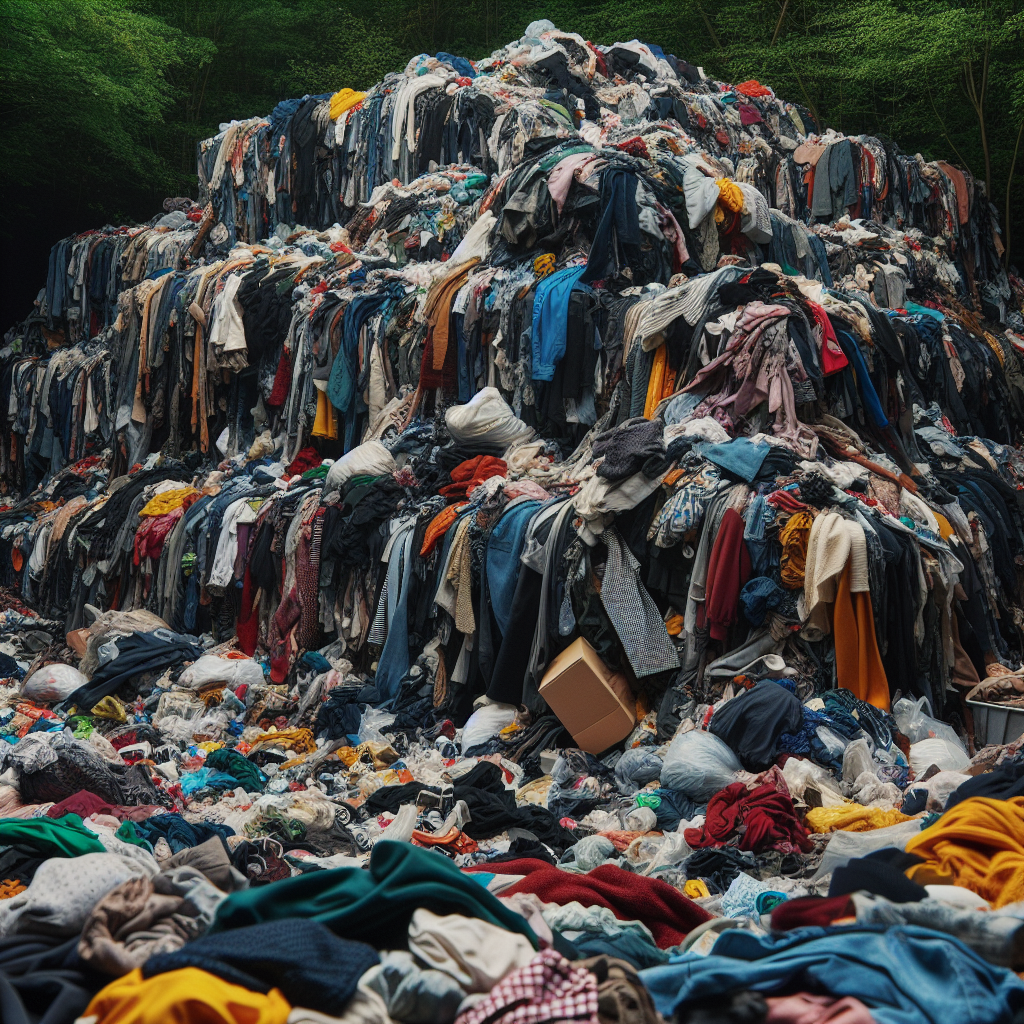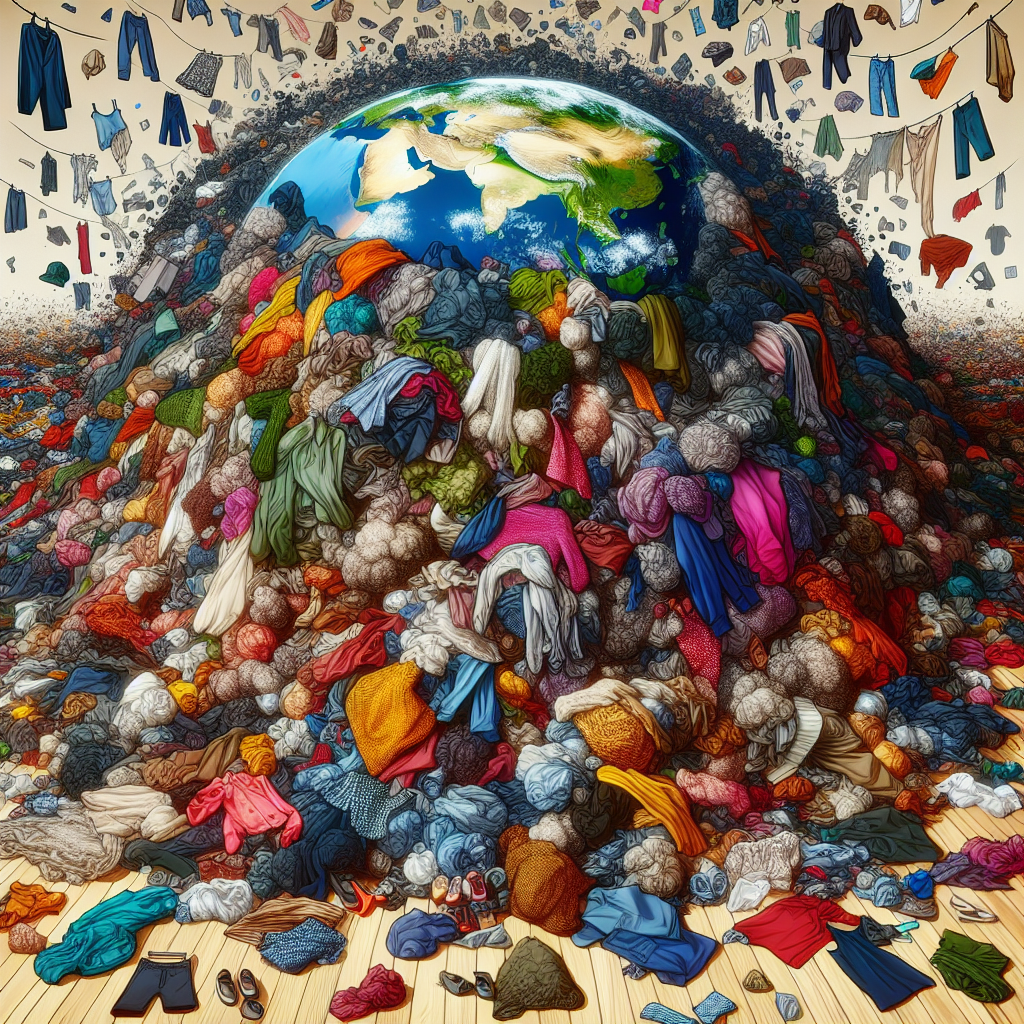Did you know that your fashion choices can have a significant impact on the environment? In this article, we will explore the impact of fast fashion on the environment and shed light on the consequences of our consumer habits. Fast fashion, known for its quick turnaround and low cost, may seem appealing to many, but the hidden costs behind this industry are worth a closer look. From excessive waste and pollution to exploitation of resources, fast fashion is taking its toll on our planet. Let’s delve into the fascinating world of fashion and discover the environmental implications that lie beneath the surface.

Introduction
In recent years, the fashion industry has undergone a significant transformation with the rise of fast fashion. Fast fashion refers to the quick production and consumption of low-cost trendy clothing, resulting in a constant turnover of new styles and designs. While fast fashion has made fashionable clothing more accessible to a wider consumer base, it has also had a detrimental impact on the environment. From water and chemical pollution to energy consumption and waste generation, fast fashion has become a significant contributor to various environmental issues. In this article, we will explore the various ways in which fast fashion has affected the environment and discuss the importance of making conscious choices as consumers.
Water Pollution
One of the significant environmental impacts of fast fashion is water pollution. The fashion industry heavily relies on water throughout various stages of the production process, from dyeing fabrics to finishing garments. Unfortunately, the water released from these processes often contains toxic chemicals and pollutants, which find their way into rivers, lakes, and oceans. This leads to the contamination of water bodies, posing a threat to aquatic ecosystems and the health of both humans and animals who depend on these water sources.
Chemical Pollution
Fast fashion also contributes to chemical pollution. The use of synthetic materials and chemical dyes in the production of clothing releases harmful substances into the environment. These chemicals not only pollute water sources but also have adverse effects on air quality and soil fertility. Additionally, the disposal of textile waste, particularly through incineration or landfills, releases toxic gases into the atmosphere, further contributing to chemical pollution.

Energy Consumption
The energy consumed in the production of fast fashion is staggering. From manufacturing textiles to transportation and distribution, the entire supply chain of fast fashion heavily relies on energy sources, primarily fueled by non-renewable resources. The demand for fast fashion has led to increased energy consumption, contributing to carbon emissions and accelerating climate change. Moreover, energy-intensive processes such as fabric dyeing and finishing further exacerbate the industry’s carbon footprint.
Waste Generation
The fast fashion industry has also resulted in significant waste generation. The rapid turnover of clothing styles and the low quality of fast fashion garments contribute to a throwaway culture, where clothing is quickly discarded after only a few uses. As a result, landfills are quickly filling up with textile waste, which takes hundreds of years to decompose. This waste not only occupies precious land space but also releases harmful greenhouse gases and contributes to the pollution of surrounding environments.
Greenhouse Gas Emissions
Fast fashion’s carbon footprint is a cause for great concern. The production, transportation, and disposal of clothing in the fast fashion industry contribute to the emission of greenhouse gases, primarily carbon dioxide (CO2). The manufacturing processes involved in textile production, such as the extraction of raw materials and the use of energy-intensive machinery, contribute to these emissions. In addition, the transportation of clothing over long distances further adds to the industry’s carbon footprint.
Deforestation
Fast fashion’s demand for raw materials, particularly cotton and wood-based fibers, has resulted in increased deforestation worldwide. Forests, which act as carbon sinks and provide habitats for countless species, are being cleared to make way for the production of textiles. Deforestation not only contributes to the loss of biodiversity but also releases large amounts of carbon stored in trees, contributing to global warming and climate change.
Loss of Biodiversity
The fashion industry’s impact on biodiversity extends beyond deforestation. Chemical pollution from textile production and the disposal of textile waste pose risks to ecosystems and species diversity. Toxic chemicals released during the dyeing and finishing processes harm aquatic life, while the accumulation of textile waste in landfills can contaminate soil and affect the health of organisms living in these ecosystems. The loss of biodiversity has far-reaching consequences, disrupting ecosystems and compromising the Earth’s natural balance.
Worker Exploitation
While the environmental impact of fast fashion is concerning, it is equally important to address the social issues associated with the industry. Many fast fashion brands outsource their production to developing countries, where workers are often subjected to unsafe working conditions, low wages, and long hours. Exploitation of garment workers not only violates their rights but also perpetuates a cycle of poverty and inequality. As consumers, we must consider the ethical implications of our fashion choices and support brands that prioritize fair labor practices.
Consumer Behavior
Ultimately, the responsibility for reducing the impact of fast fashion lies not only with the industry but also with consumers. By making conscious choices, we can contribute to positive change. Choosing clothing made from sustainable materials, supporting brands that prioritize ethical practices, and adopting a mindset of quality over quantity can all make a difference. Additionally, repairing and repurposing clothing, as well as participating in clothing swaps or second-hand shopping, can help reduce waste and the demand for fast fashion.
In conclusion, the environmental impact of fast fashion is significant and far-reaching. From water and chemical pollution to energy consumption, waste generation, and greenhouse gas emissions, the fashion industry’s practices have taken a toll on the planet. It is essential for both the industry and consumers to take responsibility and make sustainable choices. By working together, we can protect the environment, preserve biodiversity, and ensure a brighter future for generations to come.

